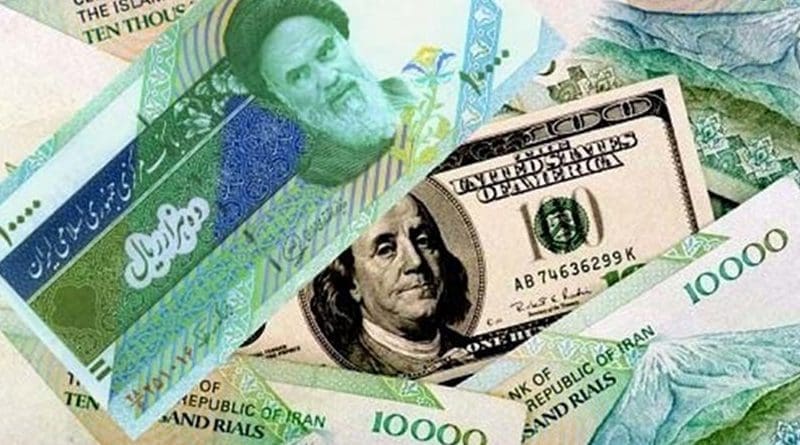Trump’s Iran Policy Undoubtedly Working – OpEd
By Arab News
By Dr. John C. Hulsman*
The world is always about more than you can see with your own eyes. Processes bubble along, unnoticed, and then explode upon the world as if they appeared from nowhere. But of course they do not. This is the magic of political risk analysis, of being able to see beyond what is in front of you, beyond the tip of your nose, and have a deeper look at how the world actually works.
Unfortunately, much of the US foreign policy establishment is incapable of this. Most political risk analysts today are so bad at noting what is going on beneath the surface that they end up merely describing momentous events after the fact, rather than analyzing the processes at work before.
Seeing that the regime in Iran continues to exist today — and continues its aggressive, expansionistic policy in the Middle East — is proof positive to a majority of analysts that President Donald Trump’s controversial “maximum pressure” policy toward Tehran is failing, as nothing has seemed to change on the surface.
Even worse, by ineffectually goading the Iranian elite, many American commentators feel that a threatened (but not wounded) Iran has lashed out ever more irresponsibly, particularly in abrogating its treaty commitments made under the imperiled Joint Comprehensive Plan of Action, the deeply flawed nuclear accord Iran struck with the US and the other great powers under the Obama administration. As such, the Trump White House is condemned for striking a hornet’s nest without actually killing any hornets.
But this cartoonish version of present events gets it entirely wrong. For, beneath the surface, economic tensions are undoubtedly building in Iran and are the central analytical factor that will lead, one way or the other, to the vindication of the maximum pressure policy.
Little commented upon, the International Monetary Fund (IMF) last month released its startling assessment of the present health of the Iranian economy. It forecasts that, for 2019, Iranian gross domestic product will shrink by a catastrophic 9.5 percent. This means that a combination of decades of internal economic mismanagement and corruption, coupled with stringent American-led sanctions biting, have completely hobbled the Iranian economy.
And, without money, it is going to be very hard to sustain the expansionist regional foreign policy that Tehran has been running. This vastly underreported economic calamity finds Iran in the dangerous geostrategic position of “imperial overstretch” in the Middle East as a whole, making it a country whose weak internal economic dynamism simply cannot sustain such a grandiose foreign policy.
It has far less money (and it is far more of a sacrifice) to fund its endlessly needy Houthi allies in Yemen, militias in Iraq, Hezbollah in Lebanon, and the Assad government in Syria. Crucially, this economic downturn coincides with mass popular discontent in both Iraq and Lebanon, as people across sectarian lines protest in ever greater numbers about their countries’ abject subservience to outside power Iran. Just at the moment Tehran’s strategic gains of the past years are increasingly imperiled, its economy is crashing.
Here the maximum pressure campaign is exacerbating what would already be a particularly difficult moment for the country’s strategic policy.
Secondly, in making its expansionistic foreign policy ruinously expensive, Tehran is setting itself up for domestic troubles of its own. Over time, internal tensions — which have already bubbled up in Iran intermittently over the past few years — will undoubtedly come to the surface again, as it remains highly problematic to run an aggressive foreign policy in the midst of a domestic economic depression.
It is Tehran’s go-to propaganda tactic to blame “The Great Satan” for all its woes; and this will undoubtedly be what the government tries to do again. However, given the hair-raising economic numbers, this is a technique that is likely to wear thin with the populace as a whole, as the Iranian government itself will be apportioned at least part of the blame by its people for their increasingly desperate economic condition. Mass internal protests cannot be far behind.
Third, given its continuance of an unaffordable foreign policy and increased internal tensions, it could well be that — as was proved true for the USSR under Mikhail Gorbachev — Iran is forced back to the negotiating table in an effort to end the surprisingly effective American sanctions.
Policies tend to continue until they simply cannot anymore. In being unable to overcome the deep economic pressures brought about by the maximum pressure campaign, the Iranian leadership might see sense and come back to the table, continuing its longstanding tactic of playing the Europeans off against the Americans in the hope of getting the hated sanctions lifted.
But, in either case, and contrary to the shallow analysis of much of the US commentariat, the maximum pressure campaign is undoubtedly working. As the IMF numbers make crystal clear, the Iranian economy is structurally tanking. If it continues on its present ruinous course, Iran will be gravely economically weakened — with all the political and strategic risks that implies — or it will be forced back to the negotiating table, as the Trump White House hopes. Both outcomes would amount to a major strategic victory for the US, and for the region as a whole.
- Dr. John C. Hulsman is the president and managing partner of John C. Hulsman Enterprises, a prominent global political risk consulting firm. He is also senior columnist for City AM, the newspaper of the City of London. He can be contacted via www.chartwellspeakers.com.

